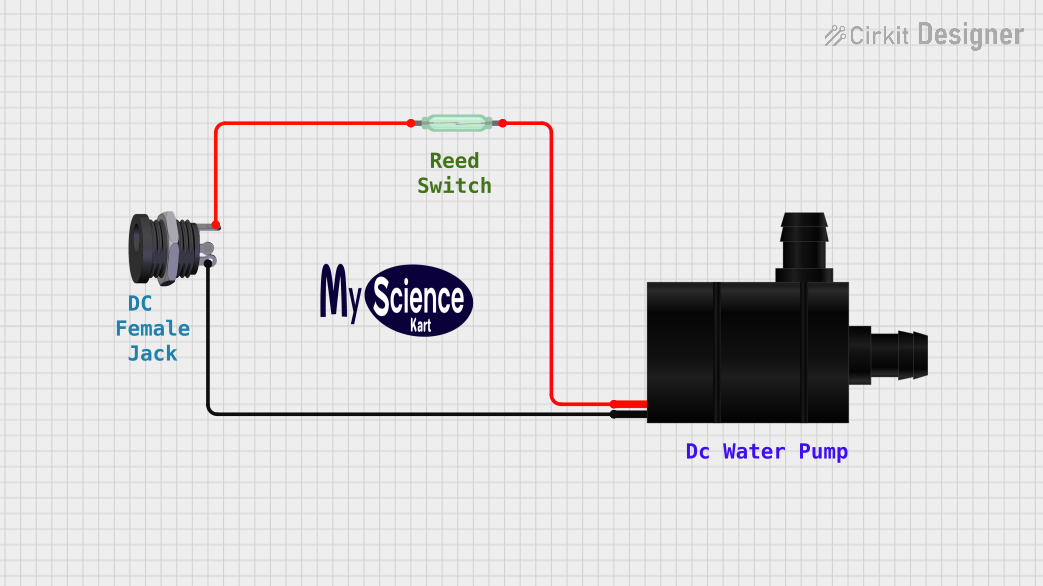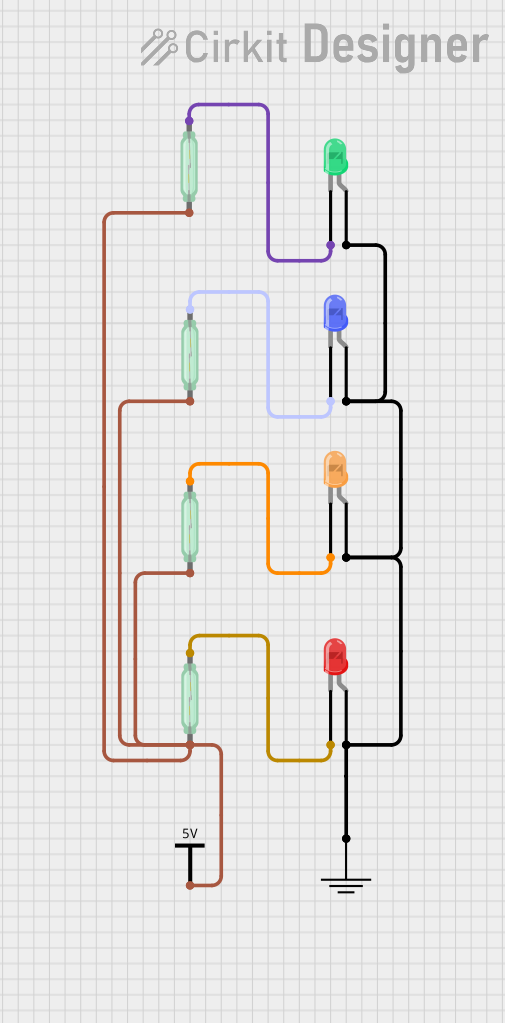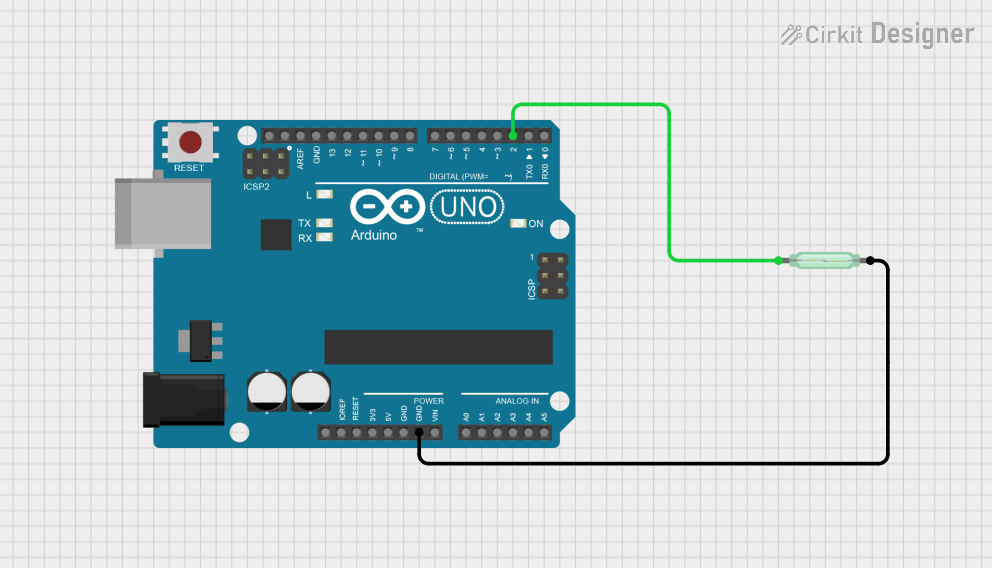
How to Use REED SWITCH MODULE: Examples, Pinouts, and Specs

 Design with REED SWITCH MODULE in Cirkit Designer
Design with REED SWITCH MODULE in Cirkit DesignerIntroduction
- A reed switch module consists of a reed switch encapsulated in a protective housing, often with additional circuitry. It operates by closing or opening an electrical circuit in response to a magnetic field.
- This module is widely used in sensing applications, such as security systems (e.g., door/window sensors), position detection, proximity sensing, and robotics. Its ability to detect magnetic fields makes it a reliable and cost-effective solution for various automation and monitoring tasks.
Explore Projects Built with REED SWITCH MODULE

 Open Project in Cirkit Designer
Open Project in Cirkit Designer
 Open Project in Cirkit Designer
Open Project in Cirkit Designer
 Open Project in Cirkit Designer
Open Project in Cirkit Designer
 Open Project in Cirkit Designer
Open Project in Cirkit DesignerExplore Projects Built with REED SWITCH MODULE

 Open Project in Cirkit Designer
Open Project in Cirkit Designer
 Open Project in Cirkit Designer
Open Project in Cirkit Designer
 Open Project in Cirkit Designer
Open Project in Cirkit Designer
 Open Project in Cirkit Designer
Open Project in Cirkit DesignerTechnical Specifications
- Operating Voltage: 3.3V to 5V DC
- Switch Type: Normally Open (NO) or Normally Closed (NC), depending on the module design
- Maximum Switching Voltage: Typically 100V DC (reed switch only)
- Maximum Switching Current: Typically 0.5A (reed switch only)
- Response Time: ~0.5ms (varies by module)
- Module Dimensions: Varies, typically ~30mm x 15mm x 10mm
- Output Type: Digital (HIGH or LOW signal)
Pin Configuration and Descriptions
| Pin Name | Description |
|---|---|
| VCC | Power supply pin. Connect to 3.3V or 5V DC. |
| GND | Ground pin. Connect to the ground of the power supply. |
| OUT | Digital output pin. Outputs HIGH (1) when the reed switch is open, and LOW (0) when closed. |
Usage Instructions
How to Use the Reed Switch Module in a Circuit
Power the Module:
- Connect the
VCCpin to a 3.3V or 5V DC power source. - Connect the
GNDpin to the ground of the power source.
- Connect the
Connect the Output:
- Connect the
OUTpin to a digital input pin of a microcontroller (e.g., Arduino UNO). - Use a pull-up resistor if the module does not have one built-in.
- Connect the
Place a Magnet:
- Position a magnet near the reed switch to trigger it. The module will output a LOW signal when the reed switch closes (magnet nearby) and a HIGH signal when the reed switch is open (magnet far away).
Important Considerations and Best Practices
- Magnet Placement: Ensure the magnet is aligned properly with the reed switch for reliable operation.
- Debouncing: Reed switches may produce noise or "bouncing" when switching states. Use software debouncing in your code to filter out false triggers.
- Current Limitation: Avoid exceeding the maximum current and voltage ratings of the reed switch to prevent damage.
- Environmental Factors: Keep the module away from strong electromagnetic interference (EMI) sources, as they may affect its performance.
Example Code for Arduino UNO
// Reed Switch Module Example Code for Arduino UNO
// This code reads the state of the reed switch and prints it to the Serial Monitor.
const int reedSwitchPin = 2; // Connect the OUT pin of the module to digital pin 2
int reedState = 0; // Variable to store the state of the reed switch
void setup() {
pinMode(reedSwitchPin, INPUT); // Set the reed switch pin as input
Serial.begin(9600); // Initialize serial communication at 9600 baud
}
void loop() {
reedState = digitalRead(reedSwitchPin); // Read the state of the reed switch
if (reedState == LOW) {
// Reed switch is closed (magnet nearby)
Serial.println("Magnet Detected!");
} else {
// Reed switch is open (magnet far away)
Serial.println("No Magnet Detected.");
}
delay(500); // Wait for 500ms before reading again
}
Troubleshooting and FAQs
Common Issues and Solutions
The module does not detect the magnet:
- Ensure the magnet is strong enough and properly aligned with the reed switch.
- Check the power connections to the module (VCC and GND).
False triggers or unstable output:
- Add software debouncing in your code to filter out noise.
- Verify that the module is not exposed to strong EMI sources.
Output signal is always HIGH or LOW:
- Inspect the reed switch for physical damage.
- Confirm that the
OUTpin is properly connected to the microcontroller.
FAQs
Q: Can I use the reed switch module with a 12V power supply?
A: No, the module is designed to operate at 3.3V to 5V DC. Using a higher voltage may damage the module.
Q: How far can the magnet be placed from the reed switch?
A: The distance depends on the strength of the magnet and the sensitivity of the reed switch. Typically, it ranges from a few millimeters to a few centimeters.
Q: Can the reed switch module detect non-magnetic objects?
A: No, the reed switch operates based on magnetic fields and cannot detect non-magnetic objects.
Q: Is the reed switch module polarity-sensitive?
A: No, the reed switch itself is not polarity-sensitive, but ensure proper connections for the module's circuitry.